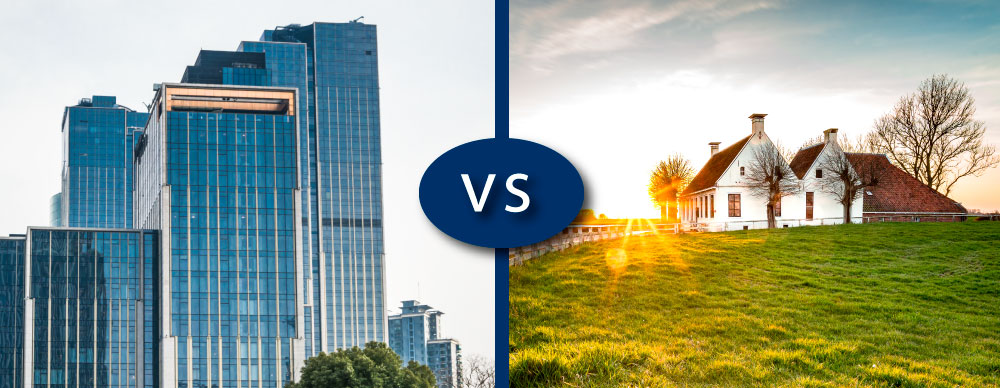URBAN VS RURAL RENTALS – A DISTRIBUTION SHIFT
One of the most noteworthy effects of the pandemic on the rental market has been the shift in the distribution of available properties between urban and suburban areas.
According to Rightmove, the imbalance of supply and demand for rental properties in these areas has led to an 11% rise in asking rents compared to pre-pandemic levels. The average asking rent in suburban areas across Great Britain is now suggested to be £1,041 per calendar month, up from £940 in February 2020. In rural areas, rents have jumped from £1,141 per calendar month to a current level of £1,264. Urban rents are up by just £25 over the same time period, from £1,347 to £1,372.
Rightmove said a sustained desire from renters for more space outside of cities has led to increased demand for suburban properties, contributing to the number of available homes to rent in the suburbs dropping by 45% compared to before the pandemic, and 61% in rural areas. This means more competition among tenants for the properties available, with tenant demand per rental property available in the suburbs rising by 155% compared to pre-pandemic levels and soaring 224% in rural locations.
Of all the available rental properties on Rightmove, 64% were in urban locations, a jump up from 48% pre-pandemic. The proportion of available properties in the suburbs dropped from 46% to 33%, while rural areas declined from 6% to 3%.
It will be interesting to monitor the lasting impact of the pandemic on individual markets across the economy and none more so than rental demand. Urban vs rural desires are likely to be tested further as we take slow steps back to some kind of normality with more people returning to offices for at least part of the working week. So, watch this space to see how this trend develops.
Cat Armstrong - 13.10.2021 | Posted in

